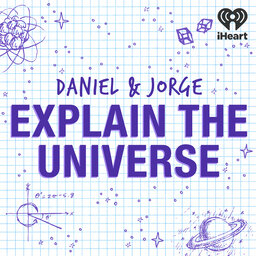Listener Questions 17: hamsters, black holes and higgs fields!
Daniel and Jorge dip the french fries of knowledge into the mysterious condiments of the Universe and answer questions from listeners like you!
Learn more about your ad-choices at https://www.iheartpodcastnetwork.com
See omnystudio.com/listener for privacy information.
 Daniel and Jorge Explain the Universe
Daniel and Jorge Explain the Universe


